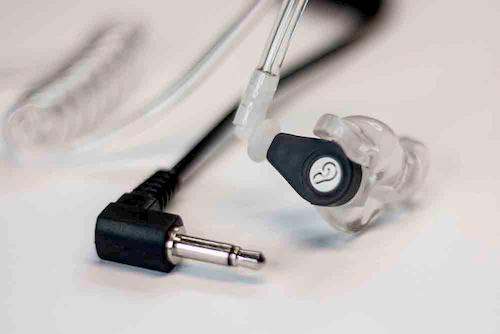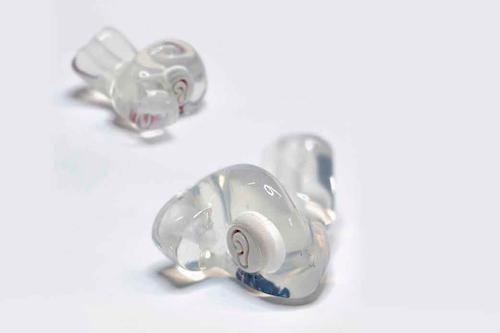Hearing protection is essential in noisy work environments, where noise damage can lead to hearing loss and other auditory problems. When choosing between hard and soft otoplastics, there are several factors to consider, such as individual needs, working conditions and personal preferences.
At Ronell, we understand that every working environment is unique and that there are no one-size-fits-all solution is when it comes to hearing protection. That is why we offer a wide range of otoplastics that meet different needs. Whether you are looking for Hard otoplastics with excellent noise insulation or soft otoplastics with high wearing comfort, we have the right solution for you.
OWe understand that comfort is essential to ensure that workers wear their hearing protection regularly. That is why we have paid great attention to the design and materials of our otoplastics, so that they are comfortable and easy to wear during long working days.
Hard otoplastics offer numerous advantages that make them an attractive option for hearing protection in the workplace. Firstly, hard otoplastics are known for their excellent sound insulation. They are specially designed to effectively attenuate sounds of harmful levels, significantly reducing the risk of hearing damage.

Another advantage of hard otoplastics is their sustainability. Manufactured from high-quality materials, hard otoplastics are resistant to wear, deformation and damage, even when used intensively in demanding working environments. This ensures a longer service life and a cost-effective long-term investment.
In addition, hard otoplastics are easy to clean and maintain. The smooth surface prevents the accumulation of dust and dirt, keeping them hygienic and suitable for reuse. This makes them ideal for workers who need daily hearing protection.
In addition, hard otoplastics offer a accurate fit. They are custom-made for each individual, keeping them comfortable and secure in the ear, even during movement and prolonged wear. This individual fit not only ensures optimal comfort, but also improved sound insulation, as they perfectly fit the shape of the ear.
Soft otoplastics offer a range of benefits that make them an attractive choice for hearing protection in the workplace. One of the main benefits is the exceptional wearing comfort that they offer. Thanks to their soft and flexible material soft otoplastics fit comfortably in the ear, even when worn for long periods of time. This makes them ideal for workers who need hearing protection throughout the day].

Another advantage of soft otoplastics is the adaptability to individual ear shape. They are custom-made for a perfect fit, keeping them comfortable and secure, even with movement. This individual fit not only ensures comfort, but also improved sound insulation as they fit snugly to the ear.
In addition, soft otoplastics offer a Good seal in the ear, providing effective sound insulation. They effectively reduce harmful noise levels while preserving important environmental sounds, such as speech and warning signals. This is especially beneficial in working environments where communication is essential.
In different working environments, it is essential to choose the right hearing protection to suit the specific requirements of the situation. Both soft and hard otoplastics have their own areas of application in which they excel. Below you will find a useful table with examples of situations where hard and soft otoplastics can be optimal:
| Situation | hard otoplastics | soft otoplastics |
| Building and construction environments | ✔️ Sound insulation | |
| Factory and production environments | ✔️ Sustainability | ✔️ Comfortable wear |
| Music and entertainment sector | ✔️ Preservation of sound quality | |
| Agricultural and agricultural machinery | ✔️ Impact protection | |
| Heavy industrial environments | ✔️ Wear-resistant | |
| Hospitality and services | ✔️ Maintaining speech intelligibility | |
| Medical and laboratory environments | ✔️ Hygienic and easy to clean |
The above table is just an example and there may be situations where a combination of hard and soft otoplastics is needed, depending on the specific needs and conditions of the working environment.

It is important to highlight that at Ronell, we offer an extensive range of both hard and soft otoplastics to meet the diverse needs of different working environments. Our expert audiologists are on hand to offer advice and help select the right hearing protection based on your specific situation.
Hard otoplastics provide excellent sound insulation, are durable and resistant to wear, easy to clean, and offer an accurate fit through customisation.
Soft otoplastics are known for their exceptional wearing comfort thanks to the soft and flexible material, customised fit, good sound insulation, and retention of important ambient noise.
The choice depends on the specific requirements of the working environment, such as the need for sound insulation, durability, comfort, and the need to be able to hear ambient noise.
We take measurements on location. Sometimes for one person, but also for a large group. We often combine our visit with a toolbox, making your employees even more aware of the importance of their hearing. We do not send otoplastics by post, but deliver them in person. We consider this essential to ensure that the otoplastics fit properly. We give instructions and carry out a 'leak test' as standard.

Trapezium 400
3364 DL Sliedrecht